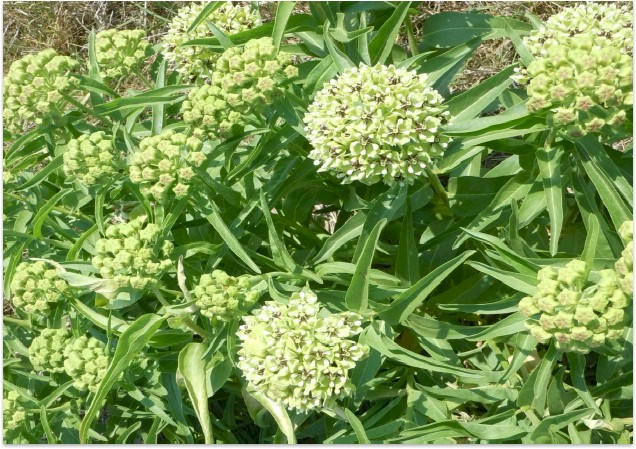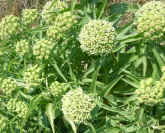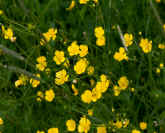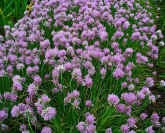|
|
|
|
|

|
 |

|
|
 |
12 Outdoor Plants That Are Toxic To Most Pets |
|
|
 |
|
|

|
|
| |

|
|
| |
|
 |
When you see symptoms such as vomiting, diarrhea, difficult breathing, abnormal urine, salivation, weakness, and any other abnormal condition, or if you suspect your pet has come into contact with a poisonous plant, take the animal to a veterinarian immediately. The sooner the animal receives care by a specialist, the more possible that the poisonous substance will be identified and treated, to improve your pet's chances for a speedy recovery.
Here are 12 common outdoor plants you'll want to steer your
pets away from.
 |
MilkWeed - Vomiting, profound depression, weakness, anorexia, and diarrhea are common; may be followed by seizures, difficulty breathing, rapid, weak pulse, dilated pupils, kidney or liver failure, coma, respiratory paralysis and death. |
|
MilkWeed |
|
 |
Azalea - Toxic to cats and dogs, horses, goats and
sheep. Ingestion of just a few leaves can cause serious
problems, leading to vomiting, diarrhea and drooling. If not treated by a veterinarian,
the animal could fall into a coma, possibly leading to death. |
|
Azalea |
|
 |
Lilies (certain
types) - So lovely, so fragrant, so dangerous to kitties! Some types of lilies -- like the peace, Peruvian and calla lily will do nothing more than irritate the mouth, tongue and esophagus if ingested but other like members of the Lilium family are considered to be highly toxic to cats, even when very small portions are ingested. Other types of lilies, like the tiger (pictured above), day, Asiatic, Easter and Japanese show varieties can result in kidney failure in cats. Between 2 and 3 petals or leaves is enough to cause serious issues. |
|
Lilies |
|
 |
Tomato plant - Although tomato plants probably won’t prove lethal for your pet, they can provide a good dose of
pain and discomfort. Symptoms can include:
weakness, severe gastrointestinal upset,
dilated pupils, diarrhea, drowsiness, CNS depression, confusion, behavioral change, slow heart rate. |
|
Tomato plant |
|
 |
Daffodil - Are toxic to cats and dogs; the bulbs being the most toxic part.
They can cause upset in humans, too. The flowers contain an alkaloid called lycorine, which is known to induce vomiting. Ingesting an entire bulb can cause:
diarrhea, stomach upset, as well as heart and respiratory issues. |
|
Daffodil |
|
 |
Tulip - The bulb of the tulip and narcissus plants that have the highest concentration of toxins.
Tulip bulbs are more toxic than the flower and its leaves.
If you have a dog that digs, be cautious. They can cause stomach upset,
depending on how much is eaten. |
|
Tulip |
|
 |
Butterup - The
small flower is toxic to cats, dogs, horses and
cows It generally doesn't cause serious issues, it can, it rare instances, result in paralysis.
Vomiting, drooling and stomach upset are the most common side
effects. |
|
Butterup |
|
 |
Gladiola - Keep your cats and dogs away from gladiolas.
It is the corm (bulb) that is most toxic to dogs and cats.
It may not be to toxic. If ingested, drooling, lethargy and stomach upset are possible. |
|
Gladiola |
|
 |
Morning Glory - The effects of morning glories can be mild to moderate for cats and dogs, depending on how
is eatent. Symptoms include: Stomach upset, anemia and, in some cases, liver failure. |
|
Morning Glory |
|
 |
Poppy - Cats and dogs can experience drooling, skin irritation, slowed heart rate and pupil dilation if they get too close to a poppy. |
|
Poppy |
|
 |
Chive - This plant, along with onion, garlic and leek, is part of the allium family and it's toxic to both cats and dogs. Akita and shibu inu dogs, along with cats, seem to be most susceptible. Abdominal pain,
elevated heart rate, weakness, and an increased respiratory rate. It could take several days before symptoms are apparent. |
|
Chive |
|
 |
Hydrangea - Dogs and cats that dine on hydrangeas can experience lethargy, vomiting and diarrhea. |
|
Hydrangea |
|
|
|

|
|
| |
|
|
 |
|
|


|
|
|
 |
|
|

|
|
|
|
|
|
|

